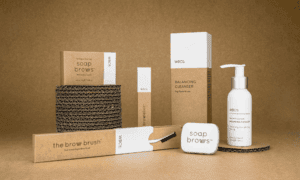In the ever-evolving beauty industry, packaging can be as important as the product inside. Clear, attractive, and compliant labeling not only serves as a canvas for brand storytelling but also guides consumers in making informed choices. The UK has stringent guidelines governing cosmetic labeling, which ensure consumer safety and provide consistency in the market. Brands must navigate these regulations carefully to stand out while remaining within the bounds of the law.
Understanding UK Labeling Regulations
To comply with UK legislation, it’s essential to understand the laws orchestrating cosmetic labeling. In the UK, The Cosmetic Products Enforcement Regulations 2013 and EU Regulation 1223/2009 outline specific requirements for cosmetic products on the market. These laws cover aspects from ingredients to labeling, ensuring products are safe for consumer use. Companies operating within the UK must warrant that their labels carry necessary information, including a list of ingredients, best-before dates, warnings, function of the product, and the name and address of the person responsible for placing the product on the market.
This essential information safeguards consumers by offering transparency and allows them to make well-informed decisions. Compliance with the rules is not optional; it’s a fundamental requirement. Thus, for beauty brands, understanding and meticulously adhering to these regulations is critical for the legal marketing of their products.
Designing Engaging Labels for Beauty Products
The aesthetic appeal of labels is pivotal in the cosmetics industry, which thrives on visual allure. The incorporation of vibrant colors, legible fonts, and captivating graphics can dramatically influence a consumer’s decision to pick one product over another. However, balancing design with the required regulatory information is a fine art. The brand’s logo, font choices, and color schemes should epitomize the brand identity, evoking an emotional connection with the target audience. Strategic use of these elements can turn a simple label into an eye-catching advertisement for the product itself.
Incorporating the brand identity into label design is more than just slapping a logo on the package; it’s about consistent storytelling across all products and platforms. This consistency builds brand recognition and loyalty, which are key to longevity in the competitive beauty market. The label should echo the brand’s core values, whether that be luxury, sustainability, or innovation, and reflect the same in the look, feel, and quality of its presentation.
Choosing the Right Material for Your Labels
Selecting the appropriate material for cosmetic labels is a decision that blends functionality with aesthetics. Various substrates are at a label designer’s disposal, from traditional paper to modern synthetics and eco-friendly options. Each material has its advantages and drawbacks. For instance, paper labels offer a classic look and are usually cost-effective, but they may not endure well in moist environments such as bathrooms. In contrast, plastic or vinyl labels are more durable and water-resistant but may not align with eco-conscious brand values.
Understanding the pros and cons of these materials is essential for making an informed choice. The product’s usage conditions, such as exposure to water or frequent handling, also dictate the material selection. The packaging material should ensure the label remains intact and readable over the product’s life. Serving both functional and environmental considerations magnifies the importance of the material choice in label design.
Ensuring Durability of Printed Labels
Durability is a top concern when it comes to cosmetic labels. A label that fades, peels, or smudges can compromise the integrity of the brand and detract from consumer confidence. Adopting techniques such as UV coating, lamination, and using water-resistant inks can significantly enhance the label’s lifespan. This ensures that even when a product is stored in high-humidity environments or handled frequently, the label remains as pristine as the day it was applied.
The importance of durability extends beyond mere aesthetics; it also encompasses the role of the label in conveying mandatory information throughout the product’s use. A durable label ensures that usage instructions, ingredients, and compliance information stay legible, which can be critical for user safety and satisfaction. Long-lasting labels are thus a testament to the brand’s commitment to quality at every stage of the consumer experience.
Navigating the Printing Process in the UK
Navigating the process of Printed labels UK can be a complex task, especially for businesses new to the cosmetic industry. Understanding the various printing options available is fundamental to achieving the desired outcome for your labels. Offset, digital, and flexography are among the common printing techniques, each with its own set of merits. While digital printing offers great flexibility for small volumes and dynamic designs, offset or flexography might be more cost-effective for larger runs.
When selecting a label printing service in the UK, it’s crucial to consider factors such as their experience within the beauty industry, the quality of their work, and their commitment to meeting compliance standards. Looking at their portfolio and customer testimonials can offer insights into their expertise. Additionally, understanding the services they provide, like support with design and material selection, can streamline the label creation process and ensure your product packaging meets the marked standard.
Label Tips for Cosmetics and Beauty Products
When it comes to cosmetic labels, clarity is paramount in highlighting essential label information. It’s not enough to simply include the required details; the information must be presented in a way that is easy for consumers to read and understand. Utilize font sizing and contrasting colors to make key information like ingredients and usage instructions stand out.
Elevating your labels to stand out on the shelf is a blend of innovation and keen market awareness. Consider unique label shapes, tactile finishes, or interactive elements like QR codes to engage the customers’ senses and curiosity. Moreover, as sustainability becomes increasingly important to consumers, integrating eco-friendly labeling solutions can resonate with your market segment while reducing environmental impact. From biodegradable materials to recyclable or compostable labels, there are numerous options available that can enhance your brand’s image and commitment to the planet.
Label Application Techniques
The method of label application is as critical as the label design itself. There are various techniques to apply labels to cosmetic products, each offering a different level of precision and efficiency. Hand application may be suitable for small batches or uniquely shaped containers, but it’s labor-intensive and may not yield the most consistent results. Machines, on the other hand, can offer speed, uniformity, and can be a worthwhile investment for larger production volumes.
The advantages of professional label application extend beyond aesthetics; it can also impact the product’s performance in the marketplace. A professionally applied label is more likely to remain in place and remain legible for the lifetime of the product, which translates to maintaining brand integrity. In a competitive market, where first impressions are pivotal, flawless label application can make a significant difference.
Compliance and Best Practices for UK Labels
For UK cosmetic labels, adherence to labeling standards isn’t a one-time affair; it involves continuous compliance checks and updates. Regular reviews of labeling practices against current legislation ensure ongoing conformity. Additionally, staying updated on any changes or amendments to the laws can prevent inadvertent non-compliance.
Best practices for label management include keeping thorough records of all label content, ensuring traceability and accountability. Likewise, establishing a procedure for timely updates to labels, whether due to regulatory changes or alterations in product formulas, maintains compliance. A conscientious approach to label management is not just about abiding by the law; it serves to protect the brand’s reputation and its customers’ trust.
Conclusion
Labels are pivotal in dictating the success of cosmetic and beauty products. They serve as the face of the brand and the bearer of critical information. As such, dedicating the necessary attention to label design, material selection, application, and compliance is not just obligatory for legalities; it is also a cornerstone of holistic brand success. Keeping these tips in mind, brands can ensure that their labels are not only compliant with UK regulations but are also compelling components of their story and present on the shelf.
As a final checklist, ensure that every label includes the necessary regulatory information, embraces the brand identity, is made of appropriate, durable material, and applied with precision. Always stay vigilant with compliance, up-to-date with industry best practices, and mindful of your ecological impact. Excelling in these areas can elevate a brand from being just another option to becoming the preferred choice for discerning beauty enthusiasts.



































